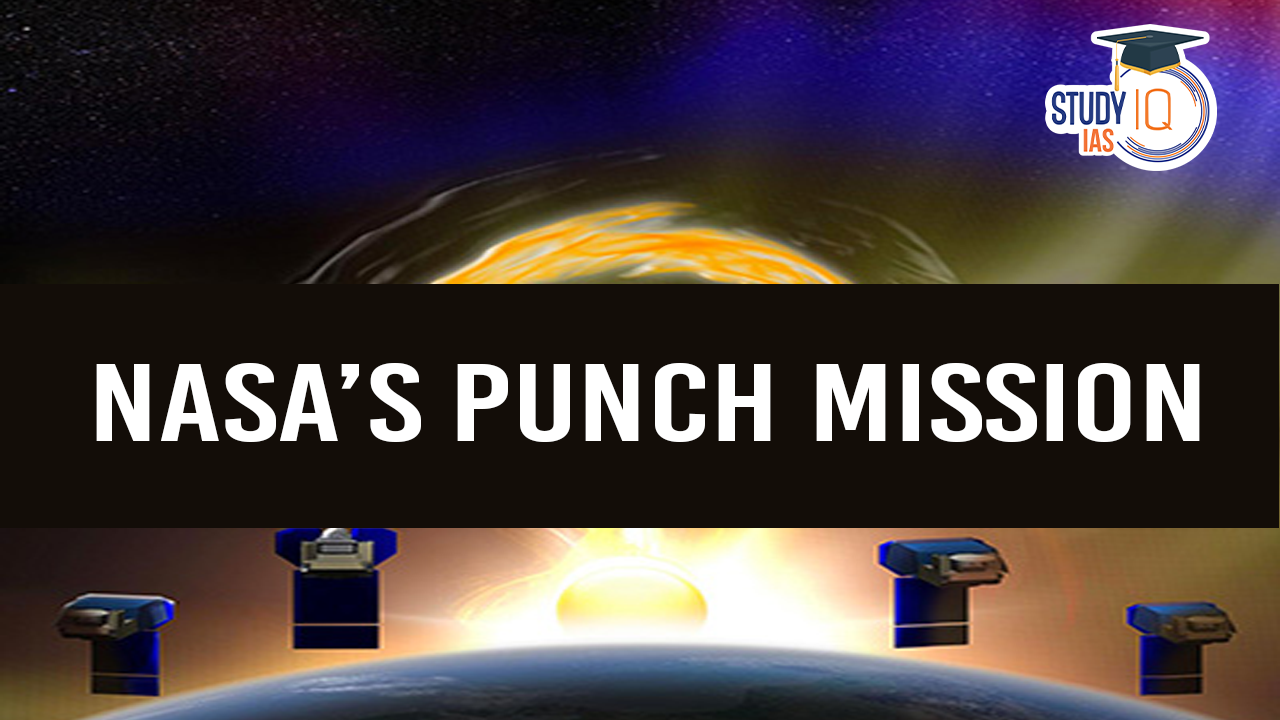Table of Contents
Context: NASA’s solar mission is scheduled for launch on March 6, 2025, from Vandenberg Space Force Base, California.
About NASA’s PUNCH Mission
Polarimeter to Unify the Corona and Heliosphere (PUNCH) is a NASA solar mission which aims to study the Sun’s outer atmosphere (corona) and its interaction with the solar wind.
Objectives of the PUNCH Mission
- Study the Sun’s Corona: Observe the structure and dynamics of the Sun’s outer atmosphere.
- Understand Solar Wind: Track solar wind expansion and acceleration as it moves toward Earth.
- Analyze Coronal Mass Ejections (CMEs): Provide real-time imaging of solar storms that can impact Earth’s satellites and power grids.
- Improve space weather forecasting.
Satellite Constellation
- PUNCH consists of four small identical satellites, each suitcase-sized.
- These satellites will work together to continuously image the solar corona and solar wind.
- The satellites will be placed in a sun-synchronous polar orbit around Earth.
Advanced Imaging Technology
- Wide-Field Imagers: Capture the Sun’s corona and track solar winds as they move through space.
- Polarization Measurements: Help understand the magnetic structure of solar wind.
What is the Solar Cycle?
- The solar cycle is an 11-year cycle of the sun’s magnetic field and activity.
- During this cycle, the number of sunspots on the sun’s surface changes from a minimum to a maximum and back again.
How does the Solar cycle work?
- The Sun has a magnetic field with north and south poles, similar to a bar magnet.
- This field is generated by the movement of electrically charged particles within the Sun.
- Approximately every 11 years, the Sun’s magnetic poles switch places, marking the start of a new solar cycle.
Role of Sunspots in Tracking the Solar Cycle
- Sunspots are dark, cooler regions on the Sun’s surface where the magnetic field is particularly strong.
- Scientists track the solar cycle by counting the number of sunspots:
- More sunspots = Solar Maximum
- Fewer sunspots = Solar Minimum
| Phases of the Solar Cycle |
|
Why Are More Solar Missions Being Launched Now?
- Current solar observations suggest that the Sun is nearing its solar maximum, although official confirmation is awaited.
- NOAA (National Oceanic and Atmospheric Administration) reports that solar activity has been above normal since May 2022 and continues to remain high in 2024.
- The next intense solar activity will not occur until 2035-2036, making this the best window for launching solar missions.


 Technology and Innovation Report 2025
Technology and Innovation Report 2025
 Satellite Internet, Working and Associat...
Satellite Internet, Working and Associat...
 India’s Undersea Cable, Expansion, Sig...
India’s Undersea Cable, Expansion, Sig...





















